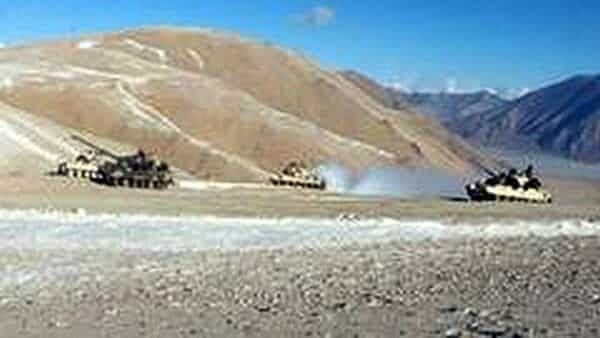Manas Dasgupta
NEW DELHI, Sept 8: India and China on Thursday announced that their armies have begun to disengage from Patrolling Point-15 in Gogra-Hotsprings area of Eastern Ladakh after reaching a consensus in the 16th round of military talks, the two sides said in a joint statement on Thursday evening.
The withdrawal of the troops marking a step forward to end the standoff ongoing since May 2020, comes ahead of next week’s Shanghai Cooperation Organisation (SCO) summit in Uzbekistan, which both Prime Minister Narendra Modi and the Chinese President Xi Jinping are scheduled to attend.
Neither side has so far confirmed if the two leaders would hold bilateral talks on the sidelines of the summit, who haven’t spoken since a November 2019 meeting during the BRICS Summit in Brasilia and the beginning of the standoff in April 2020.
“On 8th September 2022, according to the consensus reached in the 16th round of India China Corps Commander Level Meeting, the Indian and Chinese troops in the area of Gogra-Hot Springs (PP-15) have begun to disengage in a coordinated and planned way, which is conducive to the peace and tranquillity in the border areas,” the joint statement said. The 16th round of Corps Commander level talks between India and China were held on July 17, 2022 at the Chushul border personnel meeting point on the Indian side. Before that, the two sides met for talks in March.
“They had a frank and in-depth exchange of views in this regard, in keeping with the guidance provided by the State Leaders to work for the resolution of the remaining issues at the earliest. The two sides reaffirmed that the resolution of remaining issues would help in restoration of peace and tranquillity along the LAC in the Western Sector and enable progress in bilateral relations,” the joint statement on the 16th round of talks had then stated.
The defence sources said the Chinese forces in Gogra-Hotsprings area were likely to return to pre-2020 positions. India and China have been able to disengage so far from the Galwan region where fierce clashes between soldiers of both sides took place in June 2020, in which 20 Indian soldiers laid down their lives for the country. Over 40 Chinese soldiers were also reportedly killed or injured.
There have also been breakthroughs on both banks of Pangong Lake further south in Ladakh. However, Chinese soldiers are still believed to hold large swathes of Indian territory to the north in the Depsang plains.
Since the stand-off began in May 2020, the two sides have so far held 16 rounds of talks with disengagement undertaken from both sides of Pangong Tso in February 2021, and from PP-17 in the Gogra-Hotsprings area in August, in addition to Galwan in 2020 after the violent clash. The friction points that remain now are Demchok and Depsang which China has constantly refused to accept, maintaining that they are not a part of the current stand-off.
Shortly after the 15th round of talks in March, Chinese Foreign Minister Wang Yi had visited India while he and Foreign Minister S. Jaishankar met in July on the sidelines of the G20 foreign ministers meeting in Bali where they discussed the situation along the Line of Actual Control (LAC).
India has constantly stated that the relationship cannot go back to normal as long as the situation along the standoff continues and has repeatedly called for restoration of status quo and restoration along the LAC. Over 50,000 troops and heavy equipment continue to be deployed on both sides close to the LAC. In the last two years, China has also undertaken massive construction of infrastructure, habitat and support structures to maintain the troops close to the LAC, altering the ground status.

